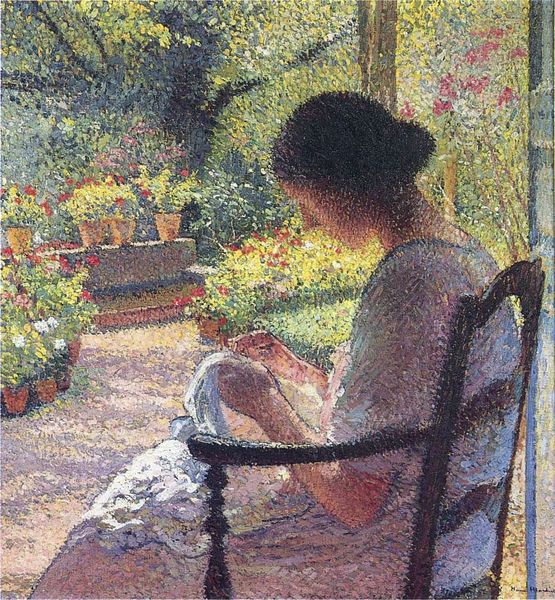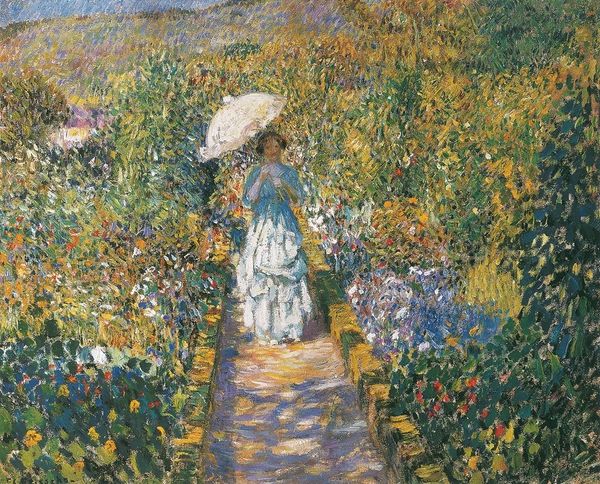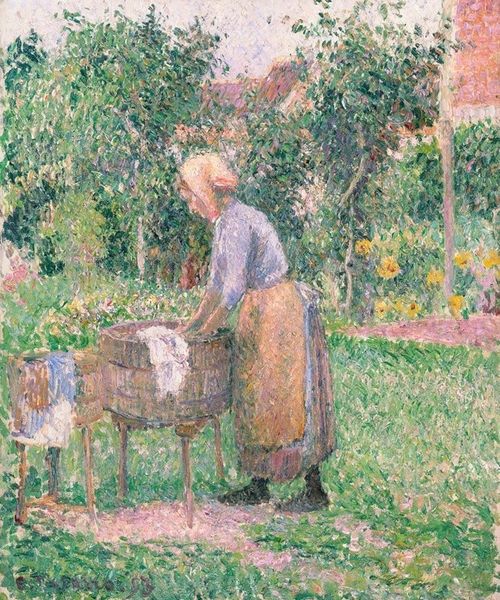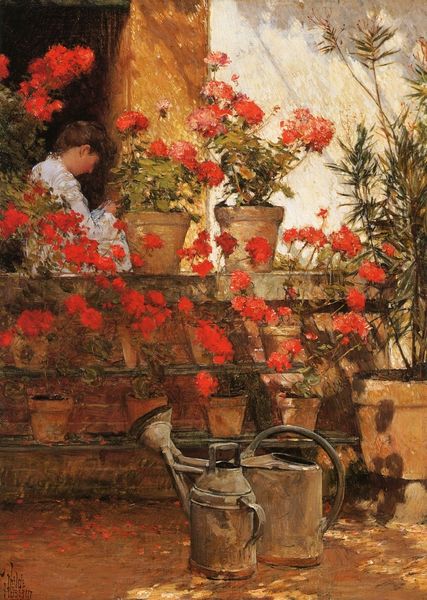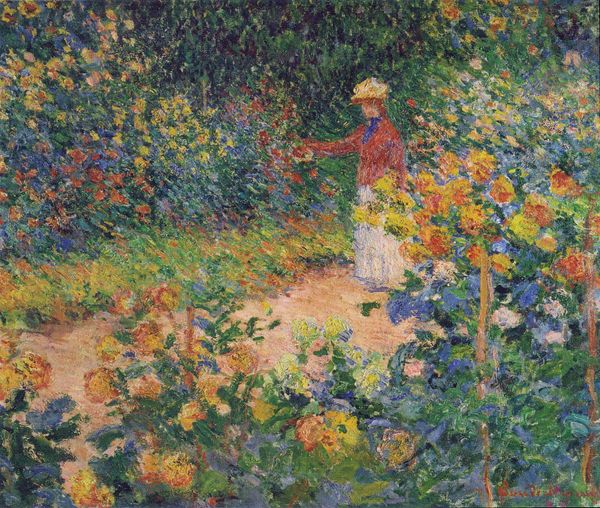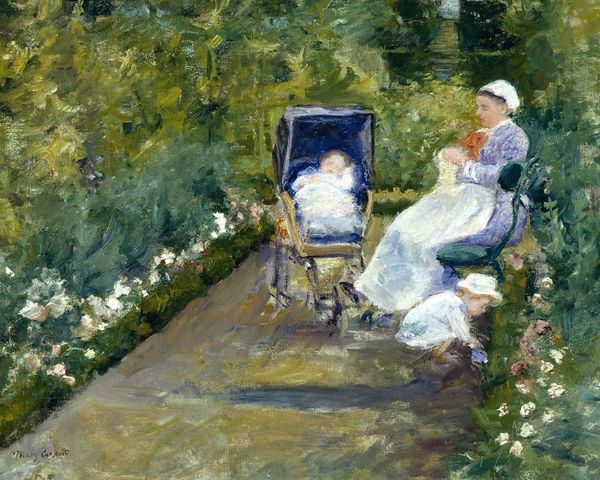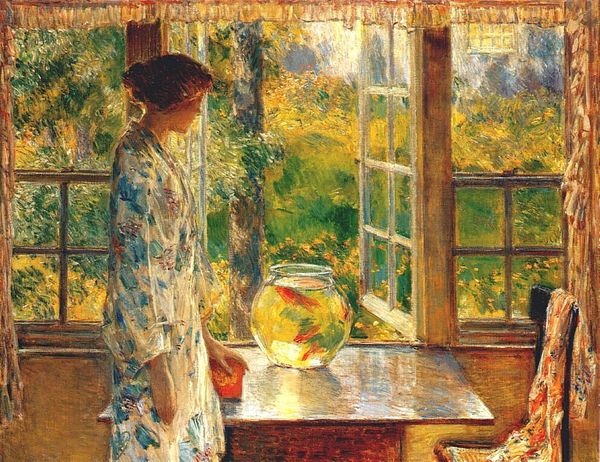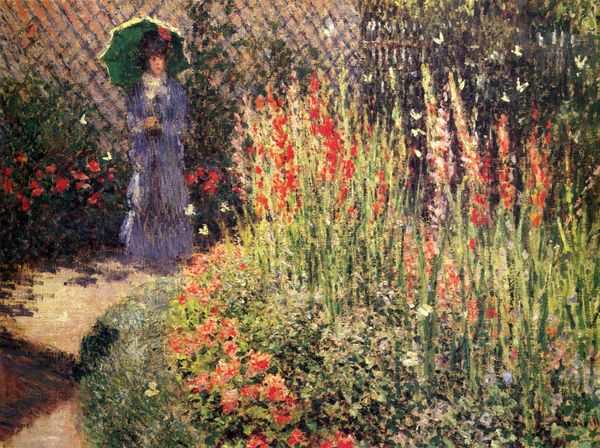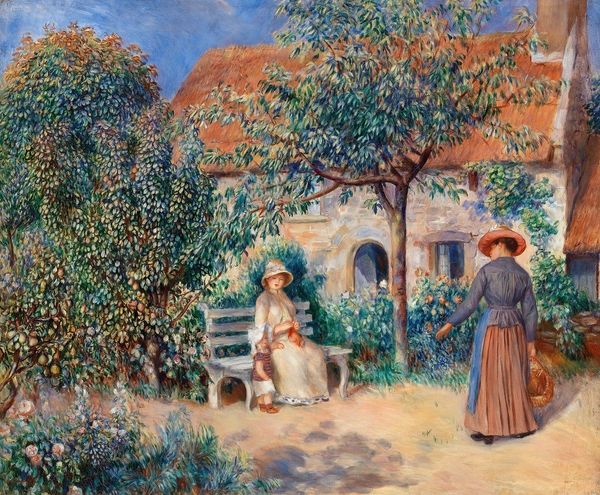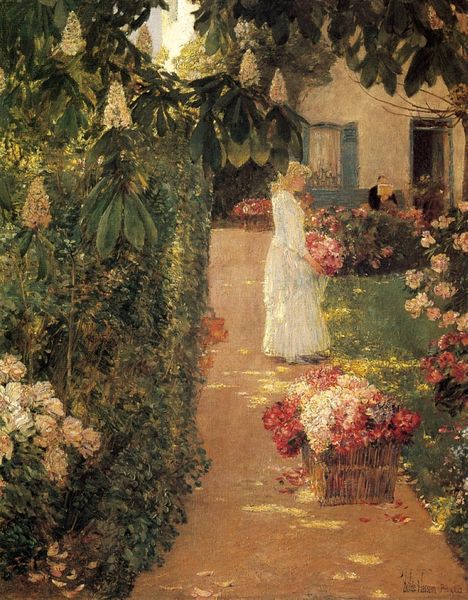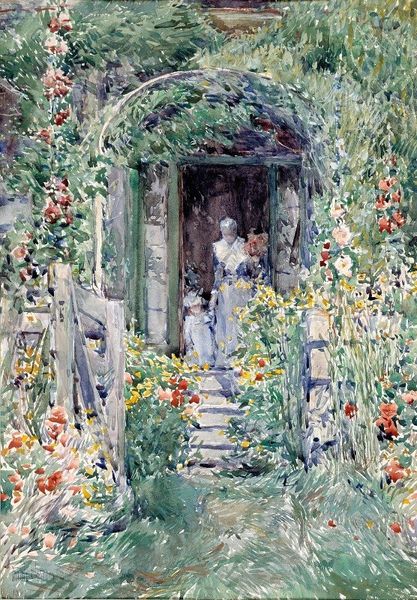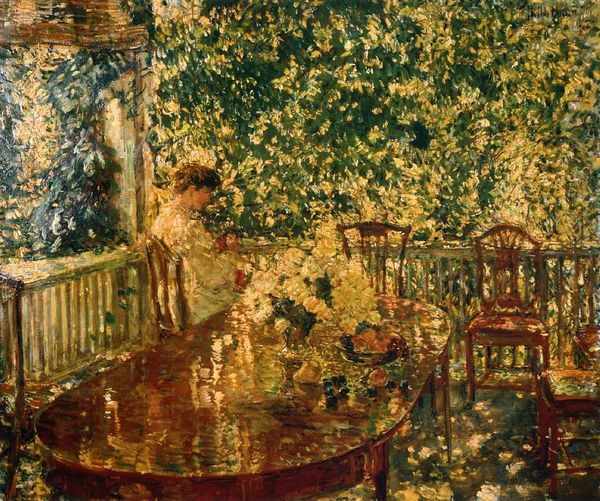
Dimensions: 51 x 61 cm
Copyright: Public domain
Curator: Frederick Carl Frieseke's "The Fountain," created circa 1923. A serene scene, isn’t it? Editor: Yes, it's instantly calming. The composition is lovely; that circular fountain in the foreground really anchors the piece and guides the eye upwards towards the figure. There’s almost a classical structure to it. Curator: Indeed. Frieseke was part of the American Impressionist movement, and spent considerable time in Giverny. His works frequently depict domestic tranquility amidst lush garden settings. It speaks to the growing American leisure class in the early 20th century, who enjoyed a newfound sense of leisure and affluence. Editor: And that focus on light! Notice how the dappled sunlight filters through the leaves, creating these amazing optical effects. It completely dissolves form and redefines it with colour. The pinks, greens, yellows all intertwined. The brushstrokes themselves become the subject. Curator: Absolutely, the way he captures the transience of light and color evokes a very specific atmosphere; one that caters to an upper-class yearning for idyllic beauty amid growing global turmoil. I believe it reflects a deliberate withdrawal from industrial modernity. Editor: True, but I'm struck by how Frieseke manages to convey a sense of solid, almost tangible presence, even amidst all that fleeting light. Look at the rendering of the fountain itself. The circular form feels sculptural in its intensity. The Impressionist technique enhances form, rather than completely dematerializing it. Curator: Which, of course, had considerable impact upon the emergent generation of American consumers. Images like this were part of a sophisticated branding process that romanticized particular lifestyles. Editor: I find it more intimate than promotional. It makes me think about Frieseke's focus on composition. Every element seems carefully considered. It presents a cohesive and visually compelling whole. Curator: Very interesting insight. Ultimately, though, paintings like this served a role in shaping public perception, one which created powerful aspiration and desire. Editor: Well, whether you look at it as propaganda or not, the artist demonstrates a sophisticated command of colour, texture, and form that cannot be ignored. It remains visually delightful today, as an arrangement of tone and colour. Curator: Agreed! The beauty of the garden and the tranquil mood are truly engaging, regardless of historical context. Editor: Yes, the longer I look at it, the more interesting I find his compositional arrangement to be.
Comments
No comments
Be the first to comment and join the conversation on the ultimate creative platform.
